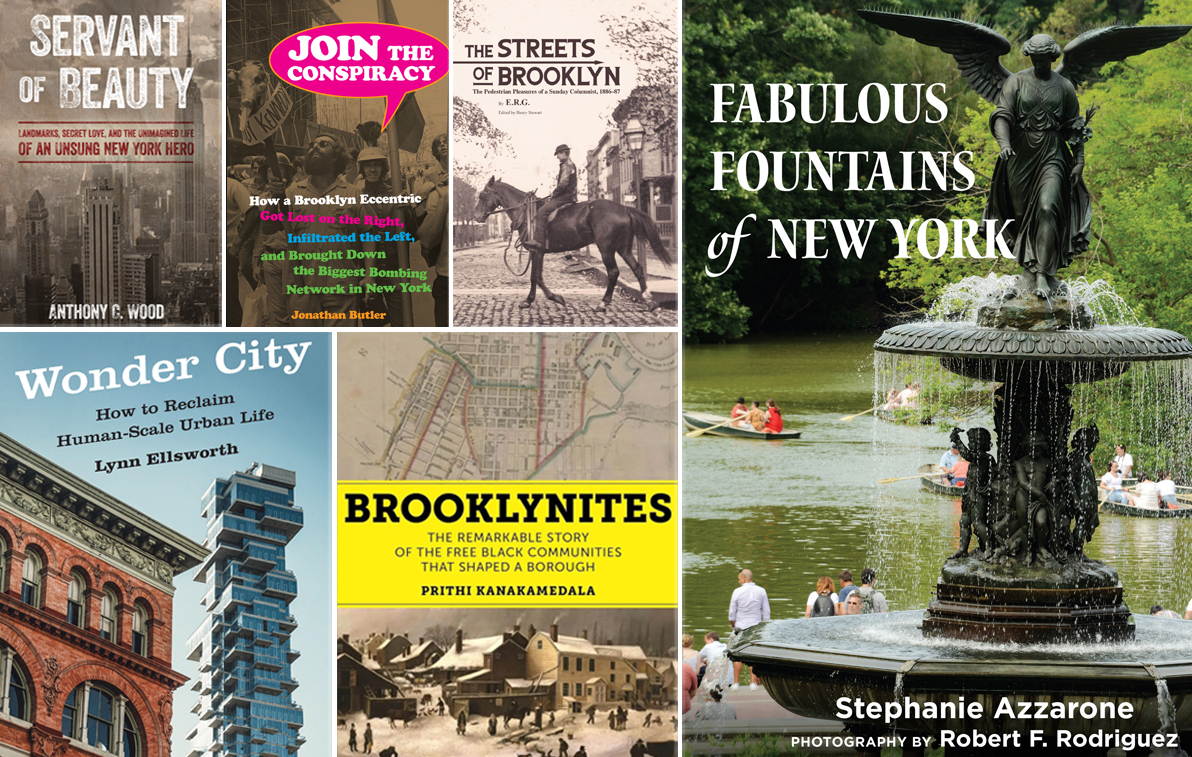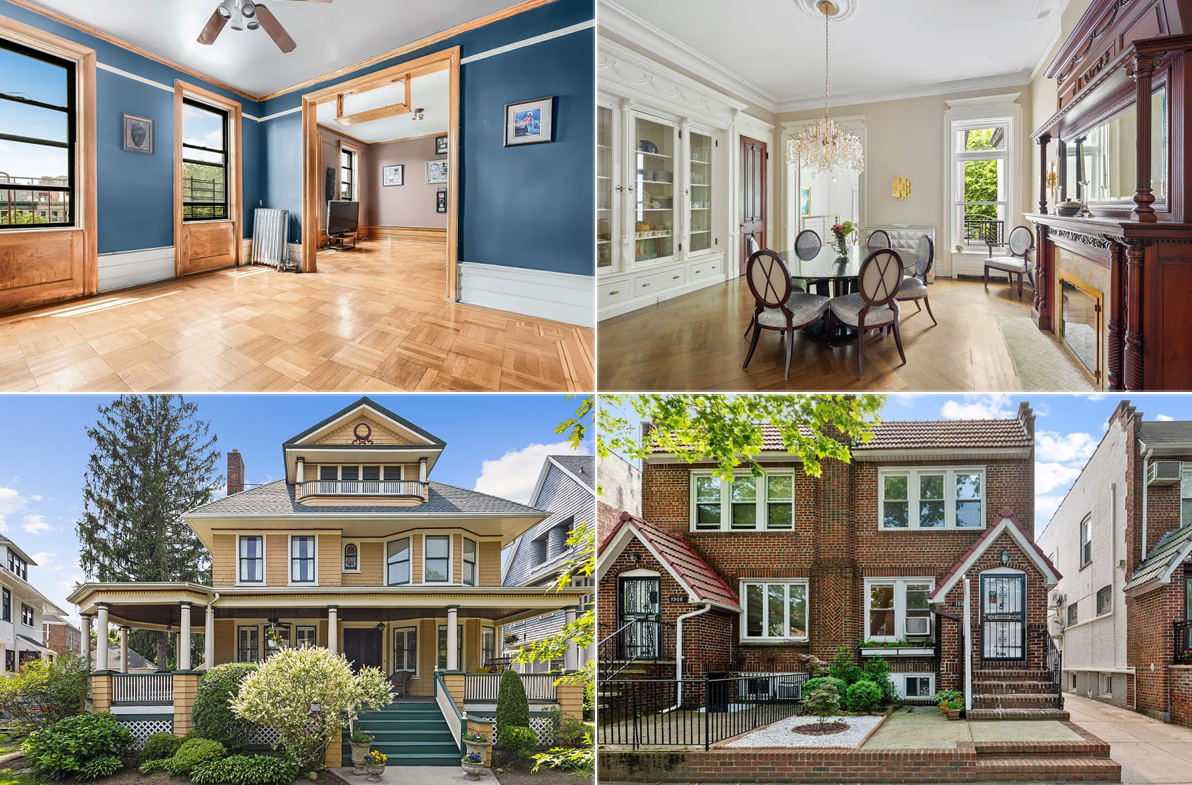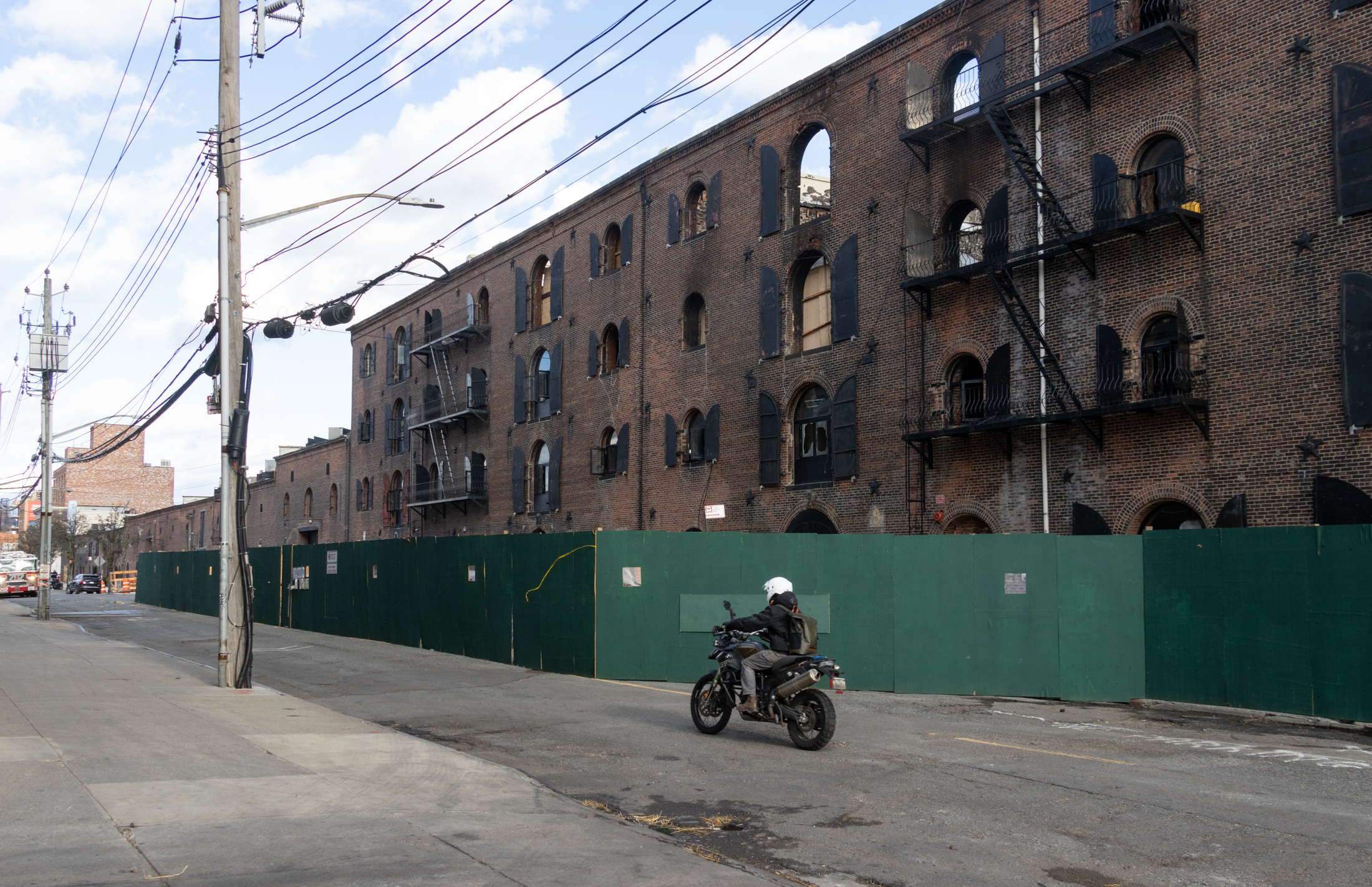Walkabout: Death and the Green-Wood
Read Part 2 of this story. Since yesterday was Memorial Day, it seems a good time to look at one of Brooklyn’s treasures Green-Wood Cemetery. For Brooklyn’s Victorian forbearers, and to this day, a resting place in Green-Wood was the final aspiration. Credit for the idea of Green-Wood goes to Henry Evelyn Pierrepont, one of…

Photo by Suzanne Spellen
Read Part 2 of this story.
Since yesterday was Memorial Day, it seems a good time to look at one of Brooklyn’s treasures Green-Wood Cemetery. For Brooklyn’s Victorian forbearers, and to this day, a resting place in Green-Wood was the final aspiration.
Credit for the idea of Green-Wood goes to Henry Evelyn Pierrepont, one of mid-19th century Brooklyn’s most influential men and a member of one of Brooklyn’s oldest and richest families.
He was inspired by Cambridge, Massachusetts’ own Mount Auburn, America’s first naturalistic park-like cemetery, which, in turn, was inspired by English park cemeteries. His notes and papers for the planning of Green-Wood are today housed at the Brooklyn Historical Society.
The basic layout of the park was designed by David Bates Douglass, drawing his own inspiration from famed landscape designer Alexander Jackson Dowling’s Picturesque landscaping, which created naturalistic and visually pleasing tableaux from the land, especially important within a growing urban landscape. This is not just a cemetery, it is a burial park. The Cemetery was declared a National Historic Landmark in 2006.
In a stroke of genius, the cemetery was planned for the hills of Greenwood Heights, taking advantage of the hills and valleys of the glacial moraines.
Sandwiched between Sunset Park, Park Slope and Windsor Terrace, Green-Wood includes Battle Hill, at 200 feet above sea level, the highest point in Brooklyn, and the site of the Battle of Brooklyn, one of the first battles of the Revolutionary War.

The cemetery covers 478 acres, and features rolling hills and valleys, ponds, and acres of trees, flowering shrubbery and plants, and miles of roads and pathways, and of course, over 600,000 permanent residents who range from the famous, the infamous, the important, and the obscure.
Green-Wood Cemetery opened in 1838, well before Prospect Park, and by the 1850’s was a popular tourist attraction, although it did take a few years to actually make money. Trolley lines, and later elevated railroad lines used to converge near the entrances to the burial park. The magnificent Gothic Revival triple towered gatehouse is the first sight visitors would see, approaching from 5th Avenue and 25th St.
The gatehouse is regarded by many architectural historians as the culmination of the Gothic Revival Style, and was designed in the late 1850’s, and built between 1861-63 by the great Gothic Revivalist architect, Richard Upjohn, designer of lower Manhattan’s Trinity Church, and Brooklyn’s Grace Church and Church of the Pilgrims.
The Victorians had a far different relationship with death than we do today. We tend to ignore death, for as long as possible, until we have to actually face it. We don’t like cemeteries, or reminders of death, popular culture and fiction not withstanding.

The Victorians knew that death was a constant companion. Life expectancies were shorter, medicine not as advanced, and for all but the rich, life was hard and short. It was not unexpected for a woman to die in childbirth, for babies and children to die from accidents or illness, or for anyone to be felled by the periodic spread of infectious disease.
That it happened to the poor more often than the wealthy did not mean death did not visit the wealthy, as well. Victorian culture was comfortable with death, so much so that woven hair jewelry, made from the hair of a deceased loved one, was worn and treasured throughout the long mourning periods, and beyond, and photographs of loved ones, laid out in their coffins, or posed as if asleep, were treasured and carried with one.
With that in mind, it doesn’t seem hard for us to imagine how the Victorians could flock to a cemetery for an outing among the rows of the dead. And they did, in droves, making Green-Wood the one of the largest tourist attractions in New York City. A day in Green-Wood was a day in nature, in a beautiful park setting with hills, lakes and meandering pathways. Ok, and lots of tombstones and mausoleums and memorials.
One of the most beautiful buildings in Green-Wood is the Chapel. It was built much later by Warren and Whetmore, in 1911. They were the architects of Grand Central Station, among other important buildings. The Chapel is a scaled down version of Christopher Wren’s Thomas Tower at Christ Church in Oxford, England.
The stained glass in the interior must be seen, it is magnificent. It never was very popular for funerals, which tended to take place off-site, and the building was closed for many years, only re-opening within the last ten years.

As one wanders around Green-Wood, the beauty and size of the grounds is staggering. So too is the scale and size of some of the monuments. No expense was spared for New York’s wealthy of the 19th century, and the cost of some of the monuments, crypts and memorials must have been huge.
More on the architecture and residents of Green-Wood in my next post, touching on just a few of the architects and historical figures covered in this column in the past.
Also apropos to Memorial Day, a look at its importance to American military history. For an informative narrated history of the cemetery, along with some great photos, please see this feature by MuseumPlanet.




[Photos by Suzanne Spellen]





“It’s the living you have to worry about, not the dead.”
QOTD
Minard, when I first came to NYC, I lived in the Woodlawn section of the Bronx, at the end of the 4 train. I used to go to Woodlawn often. It doesn’t have the terrain, but the monuments, crypts and multitude of the famous are very cool, and very similar in the older sections of the cemetary.
I don’t find cemeteries off-putting, especially these historic ones. There is so much beauty, talent and often bittersweet sadness there, and also peace. It’s the living you have to worry about, not the dead.
re: people living so long back then sans modern medicine…
I sometimes think they lived so long *because* of a lack of modern medicine. Think about all the commercials we see pushing meds…”Take Stracaterrabooboo for the pain in your back…side effects include an eyeball popping out, loss of your left big toe, temporary deafness, incontinence, etc…” Ok…so my side effect list is overstated, but you get the picture. For all that modern meds give us, it also causes quite a few problems.
Jester, thanks for the correction. My facts (and memory) were off. You’re correct; I was mistaking Central Park for Niagara Falls. Just found this online:
“By 1860, Green-Wood was attracting 500,000 visitors a year, rivaling Niagara Falls as the country’s greatest tourist attraction.
Visitors come to gawk at the most famous of the 560,000 permanent residents: F. A. O. Schwarz of expensive toy fame, Henry Chadwick of baseball fame (whose monument is complete with bases, catcher’s mitt, baseball glove, bats and a granite baseball), Samuel Morse of code fame, Leonard Bernstein of orchestral fame, Boss Tweed of corruption fame and Louis Comfort Tiffany of stained glass fame—among many others.”
Less stringent labour laws maybe?
Rich people lived longer and the people that worked for them lived shorter. I’d bet that the old people’s graves are fancier.
“Last time I was there, one of the guards told me that it was actually only second to Central Park at one time as the most popular tourist destination in New York.”
A tour I took had the tour guide saying Niagara Falls first, Green-Wood second. Statewide though.
Thanks for highlighting this fascinating place, MM! : )
Montrose, when you have a half-day, I urge you to visit Woodlawn cemetery in the Bronx. It is a stop on Metro North, so it is easy to get to. It is the other amazing historic scenic cemetery and a who’s who of NY society and architectural talent.
Thanks, MM!!!
Green-Wood is one of my favorite outdoor places in NYC. We go there so often (and with a picnic lunch) that my husband doesn’t even need a map anymore to take me to my favorite mausoleums.